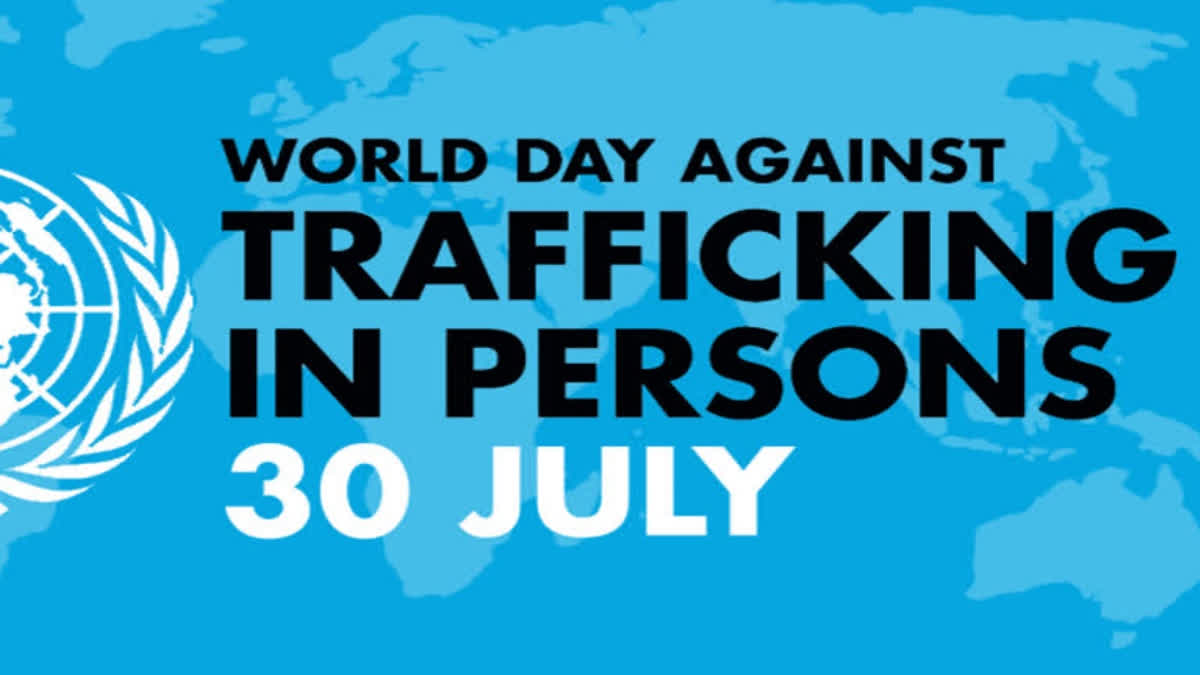New Delhi: As a part of the global campaign of initiating actions against human trafficking, the World Day Against Trafficking In Persons is observed on July 30 every year. According to the Global Report of Trafficking in Persons (GLOTIP) by the UN Office on Drugs and Crime (UNODC), children are twice as likely as adults to face violence during trafficking. On this day, communities worldwide come together to support each other and raise awareness about human trafficking.
History & Significance
The United Nations General Assembly established the World Day Against Trafficking in Persons back in 2013. This step was taken as a part of the Global Plan of Action to Combat Trafficking in Persons, which was adopted in 2010. Its objective was to fight against human trafficking in the United Nations’ broader development and security agendas. It’s been more than 11 years since this day was observed as a way to raise awareness, take global action, and support victims of human trafficking. People around the globe come together to help survivors, recognise their trauma, and raise awareness to prevent trafficking.
Theme For 2024
As children represent a significant proportion of trafficking victims worldwide, with girls being disproportionately affected, this year’s global campaign for World Day Against Trafficking in Persons urges accelerated action to end child trafficking.
With the theme, “Leave No Child Behind in the Fight Against Human Trafficking," the day focuses on the heinous crime of child trafficking. According to the Office on Drugs and Crime of the United Nations, children are subjected to various forms of trafficking, including exploitation in forced labour, criminality or begging, trafficked for illegal adoption, recruitment into the armed forces, and online and sexual abuse and exploitation.
What is child trafficking?
Child trafficking involves the use of children for exploitation in various ways. It is a serious crime and a severe violation of human rights. As per UN resolution, it is irrelevant whether a child appears to have “consented” in some way to being exploited, especially when force, deception, coercion, or abuse of power or vulnerability are being used.
Common forms of child trafficking
Vulnerable children may be exposed to many different forms of exploitation, including sexual exploitation, forced labour, begging and petty crimes, children in armed conflict, child marriage and illegal adoption. According to the UN report, in 2020, nearly 20,000 children worldwide were identified as trafficking victims globally.
UNODC's Role in addressing the problem
The United Nations on Drugs and Crime (UNODC) works to raise awareness on this global issue and accelerate action to end child trafficking. UNODC also conducts research to highlight the impact of this crime on vulnerable people, including children, worldwide, and the responses of States.
It also provides technical support to States to prevent human trafficking, deliver justice and protect victims, and ensure the effective implementation of the Global Protocol to Prevent, Suppress and Punish Trafficking in Persons, especially Women and Children, adopted by the United Nations General Assembly in 2000.
UNODC also coordinates the Inter-Agency Coordination Group against Trafficking in Persons (ICAT), a UN policy forum on human trafficking. In 2023, ICAT, co-chaired by the International Organization for Migration (IOM) and the Office of the Special Representative of the Secretary-General on Violence Against Children (OSRSG-VAC), called for accelerated action by 2025 to prevent and end child trafficking.
Global Report of Trafficking in Persons, 2022
According to the Global Report of Trafficking in Persons, 2022, 11 per cent reduction in the number of victims detected compared to 2019, largely driven by low- and medium-income countries. There was a 59 per cent reduction in East Asia and the Pacific, followed by a 40 per cent reduction in North Africa and the Middle East, a 36 per cent reduction in Central America and the Caribbean, a 32 per cent reduction in South America and a 12 per cent reduction in Sub-Saharan Africa.
As per the report, in 2020, for the first time, the number of victims detected globally decreased. This change in trends could be the result of three different factors affecting especially low and medium-income countries during the pandemic. According to the study, there was a 31 per cent decrease in detected victims trafficked for sexual exploitation in South East Asia. In 2020, more men were detected as victims of trafficking compared to previous years. 23 per cent decline in the number of domestic victims detected in 2020. Fewer victims per 100,000 population are detected than in other parts of the world.
Kailash Satyarthi Children’s Foundation
Nobel Peace Prize winner Kailash Satyarthi’s organization also works against trafficking. Bachpan Bachao Andolan (BBA), a sister organization of Kailash Satyarthi Children’s Foundation (KSCF), has rescued more than 9000 trafficked children from trains, buses and factories along with law-enforcement agencies and 265 traffickers have been arrested from the entire country since April 2020. To end the menace of trafficking, KSCF national activists, volunteers and partners are increasing the awareness of citizens by organising events across the country.
According to a report by the National Human Rights Commission (NHRC), 40,000 children are abducted each year in India, leaving 11,000 untraced.



